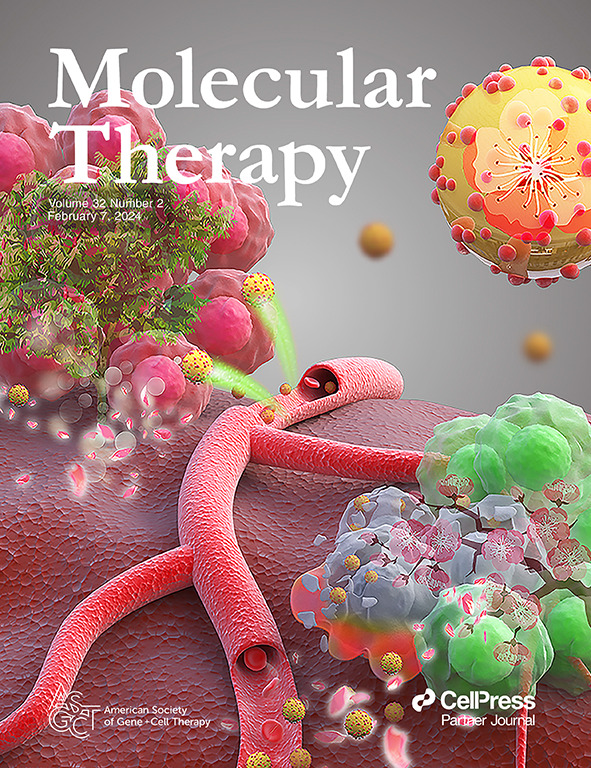外显子跳跃反义寡核苷酸在神经肌肉疾病中的临床应用。
IF 12.1
1区 医学
Q1 BIOTECHNOLOGY & APPLIED MICROBIOLOGY
引用次数: 0
摘要
四种外显子跳跃反义寡核苷酸(ASOs)已被美国食品和药物管理局(FDA)批准用于治疗杜氏肌营养不良症(DMD),包括eteplirsen、golodirsen、viltolarsen和casimersen。目前来自长期实际使用这些ASOs的数据表明,这些ASOs具有广泛的安全性,并且可以延缓肌肉退化。然而,这些ASOs的外显子跳脱功效和肌营养不良蛋白的产生是有限的,这表明需要更有效的ASOs。在过去的十年中,许多研究都集中在通过结合新的化学修饰或多种片段(包括肽或抗体)的生物偶联来提高ASOs的疗效,以增加肌肉细胞对其的细胞摄取、内体逃逸和核输入,从而提高治疗效果。许多这些新开发的外显子跳跃ASOs已经在DMD患者的临床试验中进行了研究,早期的研究结果表明,与早期版本的ASOs相比,分子疗效有明显改善,尽管安全性记录可能与第一代化合物不同。在这里,我们总结了ASOs最近的临床前和临床发展,并讨论了外显子跳跃治疗DMD和其他神经肌肉疾病的未来挑战。本文章由计算机程序翻译,如有差异,请以英文原文为准。
Clinical applications of exon skipping antisense oligonucleotides in neuromuscular diseases.
Four exon skipping antisense oligonucleotides (ASOs) have been approved by the US Food and Drug Administration (FDA) for the treatment of Duchenne muscular dystrophy (DMD), including eteplirsen, golodirsen, viltolarsen and casimersen. Current data from long-term real-world usage of these ASOs suggests a broad safety profile and a delay in the muscle deterioration. Nevertheless, the exon skipping efficacy and dystrophin protein production of these ASOs are limited, suggesting the need of more efficient ASOs. Over the past decade, many studies have focused on improving ASOs efficacy by incorporating novel chemical modifications or bioconjugations of a variety of moieties including peptides or antibodies to increase their cellular uptake by muscle cells, their endosomal escape, and nuclear import to boost therapeutic efficacy. Many of these newly developed exon skipping ASOs have been studied in clinical trials in DMD patients, and early findings suggest clear improvements in molecular efficacy compared to the earlier version of ASOs, although the safety track record may not be the same as the first generation compounds. Here, we summarise the recent preclinical and clinical developments of ASOs and discuss the future challenges of exon skipping therapies for DMD and other neuromuscular diseases.
求助全文
通过发布文献求助,成功后即可免费获取论文全文。
去求助
来源期刊

Molecular Therapy
医学-生物工程与应用微生物
CiteScore
19.20
自引率
3.20%
发文量
357
审稿时长
3 months
期刊介绍:
Molecular Therapy is the leading journal for research in gene transfer, vector development, stem cell manipulation, and therapeutic interventions. It covers a broad spectrum of topics including genetic and acquired disease correction, vaccine development, pre-clinical validation, safety/efficacy studies, and clinical trials. With a focus on advancing genetics, medicine, and biotechnology, Molecular Therapy publishes peer-reviewed research, reviews, and commentaries to showcase the latest advancements in the field. With an impressive impact factor of 12.4 in 2022, it continues to attract top-tier contributions.
 求助内容:
求助内容: 应助结果提醒方式:
应助结果提醒方式:


